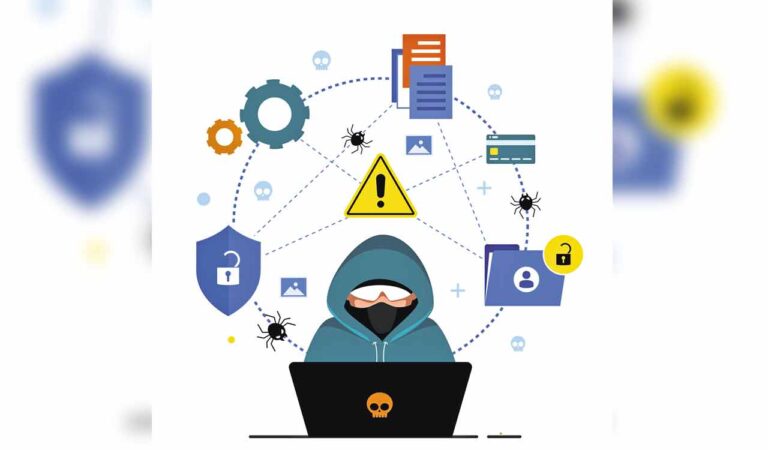Our business data is vulnerable to exploitation, fraud and abuse from legitimate sources
UPDATE – 12:46 AM, TUESDAY – 1/10/23

Every industry has its unique set of risks, and the same is true for IT departments, especially in cyberspace, whether it’s stopping targeted phishing attacks, protecting corporate accounts from compromise, fighting fraud, or defending against impersonation accounts and other social engineering scams. Cybersecurity is critical to the success of a contemporary business or individual.
Our business data is subject to exploitation, fraud and abuse from legitimate sources. Hackers and scammers are spreading malware and launching online attacks, moreover, they impersonate individuals and types to trick followers and company employees into spreading misinformation or leaking company sensitive and private data.
Some potential attacks on SMBs:
(a) Tag hijacking (b) Cross-site scripting (XSS) and cross-site request forgery (c) Domain spoofing, phishing and clickjacking (d) Solicitation other than online financial fraud, identity theft, impersonation and intellectual data theft.
Success lies in preparing for failure. Modern threats require modern technology, remember we don’t have to be a target to be a victim, no one is too small to be unaffected. Establishing best cybersecurity practices for SMBs should always be a top priority.
Several types of cyber attacks
* Malware: It is malicious software with the intent to cause damage or gain unauthorized access. Malware can take the form of viruses, worms, Trojan horses, ransomware, spyware, and more.
* DDoS: Distributed Denial of Service (DDoS) is like an unexpected traffic jam blocking a national highway, preventing normal traffic from reaching its destination.
* Man-in-the-middle (MitM) attack: Like opening someone else’s confidential email, copying part of it, and then resealing the envelope. An easy way to get rid of this never open, insecure site (http://) and open only secure sites (https://)
* Phishing: Phishing, phishing, and phishing are probably the most commonly used forms of social engineering fraud. It is an attempt to collect personal/sensitive information using deceptive methods and then commit crimes online.
* Ransomware: A ransomware attack infects your machine with malware etc. and locks you out of the system, then the hacker demands money in exchange for regaining access.
*Password attack: (a) Brute-force attack, which involves guessing passwords until hackers get in. (b) Dictionary attack, which uses a program to try different combinations of dictionary words (C) Keylogging, which tracks a user’s keystrokes, including login IDs and passwords
* SQL injection attack: This is an injection attack that can execute malicious SQL statements. They can attack your server and access and modify important databases, and even manipulate devices on the network.
* Insider attack: An insider attack occurs when an employee uses their authorized access to intentionally or unintentionally harm an organization by stealing, exposing, or destroying the organization’s data.
* APT: An advanced persistent threat attack that creates an undetected presence in a network in order to steal sensitive data over an extended period of time.
* Zero-day attack: It refers to the threat of an unknown security vulnerability in a software or application for which either no patch has been released, or the application developer is unaware or has not had enough time to apply the patch.
Tips to secure your network:-
* Two-Step Authentication: Enable two-factor authentication (2FA) for all email and business applications, a type of multi-factor authentication that strengthens access security by requiring two methods to verify your identity.
* Data Backup: It will help you when your data gets corrupted or lost during a data breach and can be easily restored from an alternate physical or cloud location.
* Encryption software: Ensure organizations have computer encryption software in place to protect sensitive data such as employee records, customer or client information, intellectual property, and other financial data.
* Antivirus and up-to-date versions: Ensuring that antivirus is part of every device and keeping all software versions up to date is a top priority.
* Awareness: Teach your employees how many different ways cybercriminals can gain access to their systems. Get them trained on how to recognize the signs of a data breach and educate them on how to stay safe while using devices and apps.
* Security Policy: Teach employees to create strong passwords, identify and report suspicious emails, activate two-factor authentication, and only click on links after confirming they are not phishing.
* Digital Wellbeing: Create ongoing awareness sessions on how to use smartphones, electronic devices and social media. Teach them how to use technology well and teach them about topics i.e. privacy, smartphone addiction, social engineering, cyberbullying, managing negative comments, fact checking, etc.

